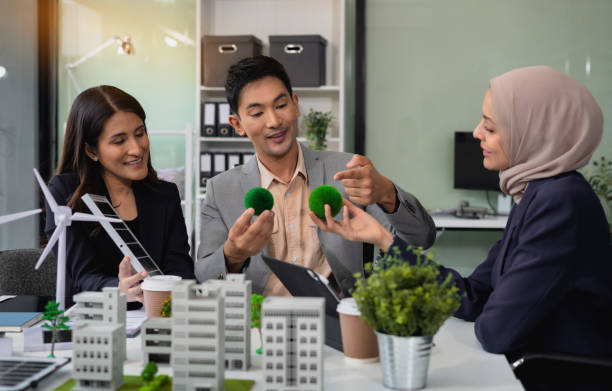Creating an environmentally conscious interior design involves more than just selecting eco-friendly materials—it’s about integrating innovative solutions that minimize environmental impact while enhancing the aesthetic appeal and functionality of your home. Here’s a comprehensive guide to green interior solutions that will help you design a space that is both stylish and sustainable.
1. Sustainable Materials
a. Eco-Friendly Flooring
- Bamboo Flooring: Bamboo is a rapidly renewable resource that offers durability and a sleek look. It grows quickly and is harvested in a way that doesn’t harm the ecosystem.
- Recycled Rubber Flooring: Ideal for high-traffic areas, recycled rubber flooring is durable and provides excellent shock absorption. It’s made from repurposed tires, reducing waste and environmental impact.
b. Low-VOC Paints and Finishes
- Low-VOC Paints: Opt for paints with low volatile organic compounds (VOCs) to improve indoor air quality. These paints release fewer harmful chemicals and come in a wide range of colors and finishes.
- Natural Finishes: Use natural finishes such as beeswax or linseed oil for wood surfaces. These finishes are free from synthetic chemicals and offer a beautiful, natural sheen.
2. Energy Efficiency
a. Smart Lighting Solutions
- LED Bulbs: Replace traditional incandescent bulbs with energy-efficient LED bulbs. LEDs use less energy, last longer, and offer a range of color temperatures to suit any mood or setting.
- Smart Lighting Controls: Install smart lighting systems that allow you to control and schedule lights remotely. This helps reduce energy consumption and enhances convenience.
b. Efficient Heating and Cooling
- Programmable Thermostats: Use programmable thermostats to optimize your heating and cooling systems. Set schedules to adjust temperatures when you’re not home, reducing energy waste.
- Energy-Efficient Windows: Upgrade to energy-efficient windows that offer better insulation and reduce heat transfer. Look for windows with low-E coatings and triple glazing for maximum efficiency.
3. Water Conservation
a. Water-Efficient Fixtures
- Low-Flow Faucets and Showerheads: Install low-flow fixtures to reduce water consumption without sacrificing performance. These fixtures use less water and help conserve a valuable resource.
- Dual-Flush Toilets: Opt for dual-flush toilets that offer different flush options for liquid and solid waste. This feature minimizes water usage and lowers your water bills.
b. Water-Smart Landscaping
- Native Plants: Use native plants in your landscaping to reduce the need for irrigation and maintenance. Native plants are adapted to local conditions and thrive with minimal water.
- Rainwater Harvesting: Implement rainwater harvesting systems to collect and use rainwater for irrigation. This practice reduces reliance on municipal water supplies and helps manage stormwater runoff.
4. Green Building Practices
a. Sustainable Construction
- Green Certifications: Pursue green building certifications such as LEED (Leadership in Energy and Environmental Design) or BREEAM (Building Research Establishment Environmental Assessment Method). These certifications ensure that your home meets high environmental standards.
- Passive Solar Design: Incorporate passive solar design principles to optimize natural heating and cooling. Use building orientation, window placement, and thermal mass to enhance energy efficiency.
b. Recycled and Upcycled Materials
- Recycled Glass Tiles: Use recycled glass tiles for backsplashes or flooring. These tiles are made from repurposed glass and offer a unique, colorful design element.
- Upcycled Furniture: Incorporate upcycled or vintage furniture to reduce waste and add character to your space. Upcycled furniture often features high-quality craftsmanship and unique design.
5. Eco-Friendly Decor
a. Natural Textiles
- Organic Fabrics: Choose organic fabrics for curtains, upholstery, and bedding. Organic cotton, wool, and linen are produced without harmful chemicals and are biodegradable.
- Hemp Rugs: Use hemp rugs or carpets for their durability and sustainability. Hemp is a fast-growing plant that requires minimal water and pesticides.
b. Green Art and Accessories
- Eco-Friendly Art: Select artwork made from recycled or sustainable materials. Look for local artists who use eco-friendly practices or repurpose materials in their work.
- Biophilic Design Elements: Incorporate biophilic design by adding indoor plants or green walls. Plants improve air quality, enhance mood, and bring a touch of nature indoors.
6. Renewable Energy Integration
a. Solar Power
- Photovoltaic Panels: Install solar panels to generate renewable energy for your home. Solar power reduces reliance on fossil fuels and can significantly lower your electricity bills.
- Solar Water Heating: Consider solar water heating systems to provide hot water using renewable energy. These systems are efficient and reduce the need for conventional water heaters.
b. Wind Energy
- Small Wind Turbines: If appropriate for your location, install small wind turbines to generate clean energy. Wind turbines complement other renewable energy sources and help reduce overall energy consumption.
7. Smart Home Technology
a. Home Automation
- Energy Management Systems: Use energy management systems to monitor and control energy use throughout your home. These systems provide insights into energy consumption and help identify areas for improvement.
- Smart Appliances: Invest in smart appliances that offer energy-saving features and remote control capabilities. Smart appliances optimize energy use and provide convenience.
b. Green Building Materials
- Sustainable Insulation: Choose insulation made from recycled materials, such as cellulose or denim. These options offer excellent thermal performance and reduce environmental impact.
- Eco-Friendly Plywood: Use eco-friendly plywood or oriented strand board (OSB) for construction and renovation. These materials are made from responsibly sourced wood and have a lower environmental impact.
8. Conclusion
Integrating green interior solutions into your home design not only contributes to environmental sustainability but also enhances the beauty and functionality of your living space. By focusing on sustainable materials, energy efficiency, water conservation, and innovative technologies, you can create an eco-friendly home that reflects your commitment to a greener future. Embrace these solutions to design a space that is both stylish and environmentally responsible, ensuring a positive impact on the planet and your well-being.
